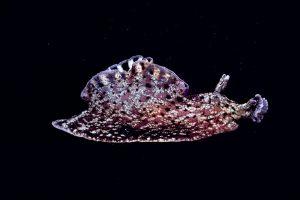Heather Murphy in The New York Times:
 Alvinella pompejana, a type of deep sea worm, can thrive at temperatures that would kill most living organisms. It has been used in skin creams — and sequences of its genes appear in 18 patents from not only BASF, but also a French research institution. Genetic prospectors — a term some find offensive, while acknowledging there’s not a great alternative — have a range of motivations. Some are hoping to develop a novel treatment for cancer. Others want to create the next Botox. Most are looking for organisms with exceptional traits that might offer the missing piece in their new product. That is why patents are filled with“extremophiles,” known for doing well in extreme darkness, cold, acidity and other harsh environments, said Robert Blasiak, a researcher from the Stockholm Resilience Centre who was involved in the patent study.
Alvinella pompejana, a type of deep sea worm, can thrive at temperatures that would kill most living organisms. It has been used in skin creams — and sequences of its genes appear in 18 patents from not only BASF, but also a French research institution. Genetic prospectors — a term some find offensive, while acknowledging there’s not a great alternative — have a range of motivations. Some are hoping to develop a novel treatment for cancer. Others want to create the next Botox. Most are looking for organisms with exceptional traits that might offer the missing piece in their new product. That is why patents are filled with“extremophiles,” known for doing well in extreme darkness, cold, acidity and other harsh environments, said Robert Blasiak, a researcher from the Stockholm Resilience Centre who was involved in the patent study.
But how can multiple entities patent the same worm — or snail? In most countries it’s not possible to patent “a product of nature.” But what companies and research institutions can do is patent a novel application of a given organism, or more specifically, its genes. “It often requires making these Frankenstein synthetic organisms; a little bit of DNA from a lot of different things,” said Mr. Blasiak. What that basically means is your cat or a coyote in your backyard cannot be patented. “But if you went out and created a transgenic coyote that no one has done before, then probably yes,” said Dr. Robert Cook-Deegan, a professor at the School for the Future of Innovation in Society at Arizona State University.
More here.
